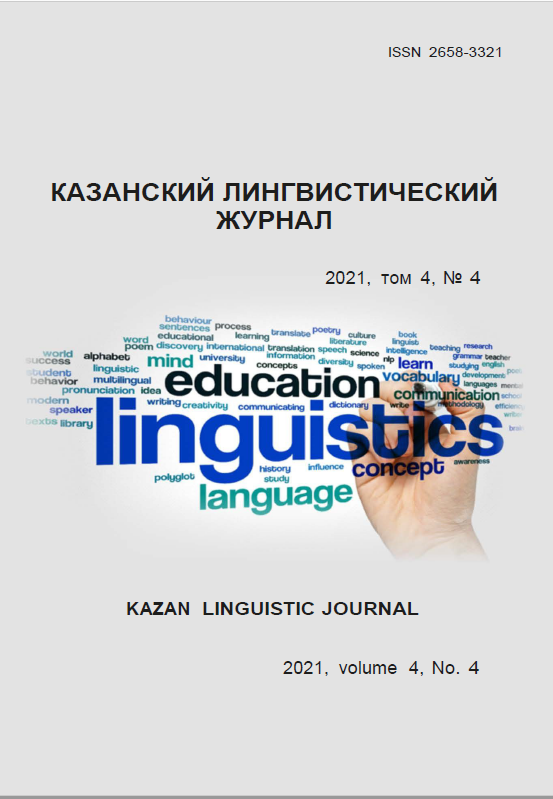Continuity of common Turkic and tatar literature: the motif of the native land
https://doi.org/10.26907/2658-3321.2021.4.4.499-511
Keywords:
Tatar literature, general Turkic literature, motif, chronotope, leitmotifAbstract
One of the most significant phenomena for Tatar literature – the motif of the native land – appeared in the artistic consciousness of the Turkic Tatars in the VIII century. This is evidenced by the Orkhon-Yenisei monuments of general Turkic literature. This motif has become an indicator of the mentality of an ancient man, in whose perception the native land is not only a place of birth and residence, but also a safe place that allows the ethnic community to strengthen and develop, which can become a guarantor of its future. The development of Tatar culture mainly in the context of Arab-Muslim civilization displaces this motif to the periphery. In Tatar religious and Sufi literature, the native land begins to function in the status of a chronotope. But with the formation of secular educational literature, the situation is changing: by the beginning of the twentieth century, the motif loudly declares itself within the theme of the fate of the Tatar people. Although Soviet ideology tried to transform the content of this motif, the traditions of common Turkic literature and Tatar literature of the early 20th century assert themselves with renewed vigor in the 1960s. The leitmotif of the native land is still one of the main in Tatar literature today.
References
Silantyev I.V. The theory of motive in Russian literary studies and folklore studies. An essay on historiography. Novosibirsk: IDMI Publishing House; 1999. (In Russ.)
Tselkova L.N. Motive. Literary Encyclopedia of terms and concepts. ch. ed. and comp. A.N. Nikolyukin. M.: NPK “Intelvak”; 2001: 594. (In Russ.)
Tyulenin M.Yu. The leitmotif. Literary Encyclopedia of terms and concepts. ch. ed. and comp. A.N. Nikolyukin. M.: NPK “Intelvak”; 2001: 435¬–437. (In Russ.)
Klyashtorny S.G. The Steppe Empire of the Turks and its heirs. The history of the Tatars since ancient times. In seven volumes. vol. 1: Peoples of Steppe Eurasia in ancient times. Kazan: Publishing house “Ruhiyat”; 2002: 218–-267. (In Russ.)
Ancient Turkic runic writings: Monuments in honor of Kul-tegin and Tonyukuk. Prepared by G. Fayzrakhmanov. The history of the Tatars since ancient times. In seven volumes. vol. 1: Peoples of Steppe Eurasia in ancient times. Kazan: Publishing house “Ruhiyat”; 2002: 408¬–420. (In Russ.)
Sayf Sarayi. Gulistan. Lyrics. Dastan. Prepared by H. Minnegulov. Kazan: Tatar. kn. ed.; 2011. (In Tatar)
Musa Akyeget. Hisamutdin menla. Translation from Tatar Ibrahim Gurkin. Available from: https://proza.ru/2015/02/05/1998 [accessed: 24.11.2021] (In Russ.)
Tukai G. Phaeton of Spring: poems, poems for children, fairy tales. Moscow: LLC «MAGI «From century to century»; Kazan: Tatar. kn. ed.; 2011. (In Russ.)
Yunis M. Our house stood under a willow tree. Works in 6 volumes. vol. 1: short story, novella (1961–1986). Kazan: Publishing house “Ruhiyat”; 2003. (In Tatar)






